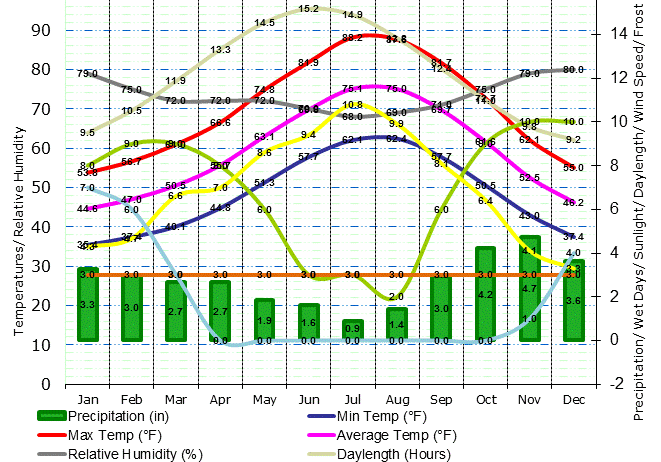The climate of Rome, Italy, stands as a compelling example of the Mediterranean characteristics that define the region. Those who have not yet had the pleasure of visiting or studying this historic city might find themselves intrigued by its distinct seasonal variations and climatic conditions. Initially, it’s crucial to understand that Rome experiences a Mediterranean climate, classified scientifically as Csa according to the Köppen climate classification. This classification reveals much about the weather patterns, temperature fluctuations, and precipitation levels that characterize the Eternal City.
At first glance, the Mediterranean climate enthralls with its promise of sun-kissed days. Summers in Rome are typically long, hot, and arid. From June through September, average temperatures soar, often reaching peaks above 30 degrees Celsius (86 degrees Fahrenheit). This sultry heat, amplified by the urban heat island effect prevalent in cities, creates an environment that attracts tourists and locals alike. The bright skies and radiant sunlight enhance the city’s ancient architecture, accentuating its grandeur while providing ample opportunities for outdoor festivities and camaraderie.
However, there is more to Rome than just sun-drenched summers. The transition into autumn brings a slight decline in temperature, ushering in more variable weather patterns. September still holds onto the last remnants of summer, while October presents a gradual coolness. The turning leaves and the scent of impending rain create a picturesque tableau that captivates the eye. It’s an exquisite reminder of nature’s rhythms, as sunlight slowly yields to the embrace of cooler temperatures.
The winter months, particularly December through February, exhibit marked contrasts. Winters in Rome tend to be mild compared to many other European cities. Daytime temperatures average around 10 to 15 degrees Celsius (50 to 59 degrees Fahrenheit), yet the nights can be considerably cooler. Frost is infrequent, and snow is a rarity, creating conditions that allow the city to maintain a liveliness during the colder months that many other locales struggle to achieve. The occasional chill in the air does not deter the spirited nature of Romans; rather, it emboldens them to wield coats and scarves as they traverse cobblestone streets.
During the winter, rain becomes more frequent. Typically, January is the wettest month, contributing significantly to the annual precipitation total, which is about 800 millimeters (31 inches). However, this precipitation is not uniform. Rain fell intermittently, often manifesting as brief downpours followed by sunny interludes. This pattern reinforces the notion that even in its coldest months, Rome retains an element of dynamism.
Spring reawakens the city, culminating in a spectacular transmutation. March and April witness a gradual warming, with temperatures climbing as buds bloom and flowers unfurl. This metamorphosis offers an enticing spectacle, as vibrant greens and blossoms intermix with the ancient stones, ushering in a season of renewal and celebration. The celebrated Easter festivities, accompanied by the increasing warmth, foster a bustle and buoyancy that permeate the city’s essence.
Understanding the climate of Rome transcends simple thermometers and rainfall charts. It invites a deeper inquiry into how such climatic conditions affect not only the daily lives of its inhabitants but also the global concerns around climate change. As Mediterranean climates are predicted to endure transformations due to climatic events, it raises questions about sustainability and adaptation. Urbanization, increasing temperatures, and shifting weather patterns present dilemmas that necessitate earnest attention.
The challenges faced amidst Rome’s climatic framework mirror those confronting many Mediterranean regions. Prolonged droughts and intense storms are becoming increasing reality. Such extremes not only impact the natural environment but also threaten local agriculture and water supplies. In a nation famed for its rich culinary traditions and agricultural heritage, safeguarding these essential resources is paramount. It compels the need for innovation in agricultural practices and urban planning to fortify resilience against climate-induced stressors.
Moreover, the impact of climate change on tourism cannot be understated. Rome annually draws millions of visitors who are entranced by its history, culture, and natural beauty. The balancing act of preserving the underpinnings of such ancient sites while accommodating throngs of tourists poses a unique challenge. Emphasizing sustainable tourism practices could pave the way for a future that respects both heritage and environmental stewardship. Encouraging visitors to explore lesser-known locales can also alleviate pressures on popular destinations, fostering a more authentic experience while preserving the nuances of Roman culture.
The climate of Rome, characterized by its Mediterranean days and mild winters, thus emerges as a poignant illustration of broader environmental issues that resonate globally. The delicate interplay between favorable weather, urban life, and climatic shifts underscores the need for awareness and proactive measures. Envisioning a sustainable future requires an appreciation for both the wonders of our climate and the inherent responsibilities we bear to protect its integrity.
In conclusion, the eloquence of Rome’s climate offers not just data points for interest but a profound exploration into the interactions of human life with the environment. From sunlit summers to gentle winters, every aspect of Rome’s atmosphere contributes to its allure. As climate change continues to alter the trajectory of weather patterns globally, Rome’s climatic narrative sheds light on challenges and opportunities alike, compelling a shift in perspectives that resonates across generations.








